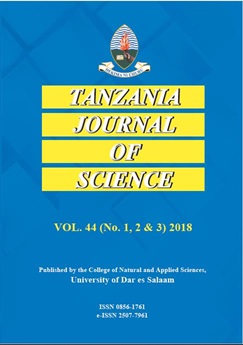Effects of Vacuum Packaging and Chilling Storage on the Microbiological Changes of the Superheated Steam Dried Sardine
DOI:
https://doi.org/10.4314/tjs.v49i1.13Abstract
Fish are important sources of protein and micronutrients for combating malnutrition. Since fish are highly perishable, methods for processing and preserving them should be the main focus to increase their shelf life and maintain their quality. The present study assessed the effectiveness of the superheated steam dryer (SSD) in processing sardines, and examined the effects of packaging and storage conditions on their microbiological quality. Sardines collected from the Mafia Island were dried in SSD, air-packed and stored at room temperature (AR), air-packed and stored at chilling temperature (AC), vacuum-packed and stored at room temperature (VR), and vacuum-packed and stored at chilling temperature (VC) for 49 days. Following drying, the total viable bacterial counts (TVBC) and total yeast and mould counts (TYMC) both decreased from the initial values of 9.14 (TVBC) and 2 (TYMC) log CFU/g in the fresh samples to 0.00 log CFU/g. The AR samples had the highest microbial growths during storage (7.48 (TVBC) and 2.82 (TYMC) log CFU/g), whereas the VC samples had the lowest (1.79 (TVBC) and 1.42 (TYMC) log CFU/g). The AR treatment was rejected within 21 days, whereas the AC, VR, and VC treatments prolonged the sardines ' shelf life throughout the storage time.
Keywords: Superheated steam dryer, sardine, microbial analysis, vacuum packaging, chilling storage


